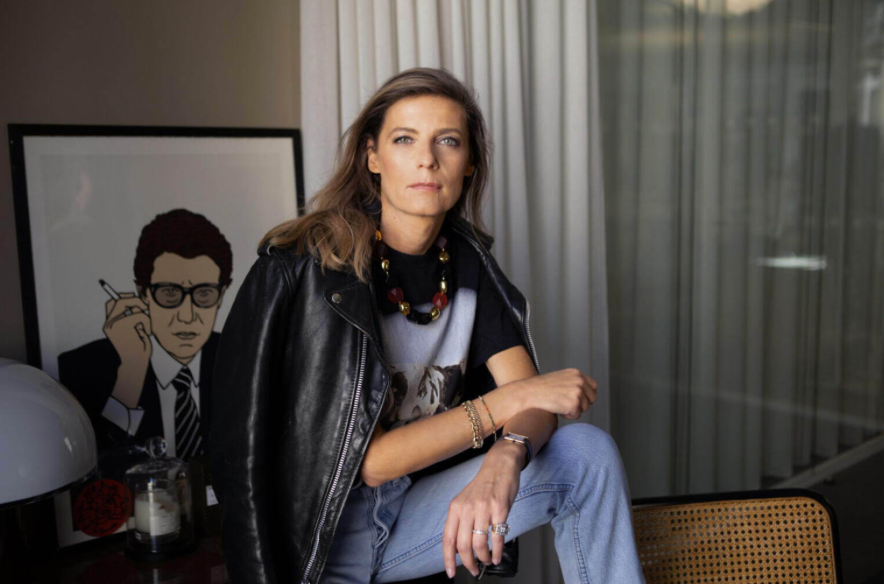Sophie Hersan, Co-founder of Vestiaire Collective, discusses Circular Fashion and the transition towards sustainability
- Wilson Lim
- Mar 26, 2023
- 3 min read
“[People] can love fashion in a good way. That’s what we’re trying to explain and educate.” – Sophie Hersan

2022 was a significant year for Vestiaire Collective, marked by the expansion of its operations, including the establishment of a UK Authentication and Logistics Centre and the acquisition of the Los Angeles-based online peer-to-peer resale marketplace Tradesy, as well as advancements in its long-term sustainability objectives. In March, it initiated the “Long Live Fashion” campaign featuring a quintet of fashionable puppets made from second-hand clothing, with each character embodying a specific aspect of the sustainability discourse in fashion, including the emphasis on timeless items, the pursuit of vintage products, and the resale of infrequently worn pieces. One month later, it published Vestiaire Collective’s inaugural impact report, developed in collaboration with the accounting firm PwC, which determined that purchasing from Vestiaire Collective reduced the environmental cost of a new purchase by 90 percent, equivalent to 17 kg of CO2 emissions. Towards the year's conclusion, the company implemented a prohibition on fast fashion items from the platform.

Currently, we utilize our garments 40 percent less than we did a decade ago; yet, clothing consumption is projected to increase by 63 percent by 2030, as stated by Sophie Hersan, co-founder and fashion director of Vestiaire Collective. Previously a studio manager for several fashion designers, Hersan established the platform in 2009 alongside five partners after observing that consumers were purchasing more items but wearing them less. The group aimed to develop a solution that offered an alternative to conventional consumption practices. “Fourteen years later, I believe the essential consideration for individuals joining these movements is: how can I personally enhance my consumption of superior quality?” Hersan states.
“I originate from the fashion industry, which has endowed me with knowledge of creativity and craftsmanship, as well as an understanding of the industry's rigorous demands. I hold respect for this, yet I also recognize its potential to harm the environment,” she elaborates. The objective of Vestiaire revolves around aesthetics and fashion, as well as trust and sustainability, facilitated by the circular business model we established.

The demand for sustainability is robust in Europe and rapidly increasing in Asia and the Americas, especially among Gen Z consumers, correlating with the valuation of the secondhand garment market, estimated between US$100 billion and US$120 billion, according to Hersan. “We aim to motivate the industry to decrease production—it is our objective.” She says, "We seek to avoid overproduction and overconsumption." “I understand that fashion evokes emotions and serves as a source of inspiration.” Individuals appreciate fashion, although they can appreciate it positively. That is what we want to elucidate and instruct.
Hersan characterizes Vestiaire Collective as “a circular business model” and “one piece of the puzzle in circularity,” noting that the company assists brands in enhancing their sustainability, exemplified by its collaboration with Chloé on the Chloé Vertical project, which features a capsule collection of items embedded with a digital ID that provides provenance information. “They represent linear business models,” she elucidates. “What is the rationale behind the shift towards increased circularity today?” The customers requested the brands directly. When clients exhibit brand loyalty, companies recognize the necessity of entering the secondhand market to meet consumer demand, despite it not being their primary business focus.

According to Vestiaire Collective’s 2022 Impact Report, the fashion resale sector is projected to quadruple its market share to 18 percent by 2030, resulting in a reduction of environmental costs by €38 billion through the purchase of pre-owned items instead of new ones. “The discourse surrounding sustainability and circularity in fashion has expanded significantly, and this is merely the inception,” asserts Hersan. “It is evident that the resale market is expanding more rapidly than fast fashion, thus eliminating any stigma associated with purchasing secondhand items.” I am optimistic that today marks a pivotal moment.

“It is crucial for us to establish Vestiaire as a contemporary solution, and we have much to accomplish.” Once more, the focus is on education and the promotion of the advantages of purchasing secondhand items while distancing from fast fashion. We encourage members to support the transition from fast fashion to second-hand clothing: for $100, one may acquire a single high-quality item instead of five inferior things that will ultimately be discarded.










Comments